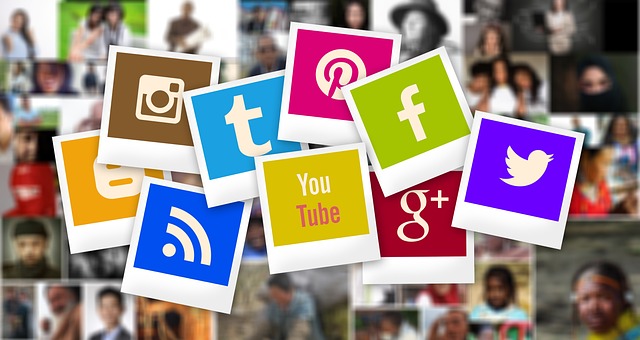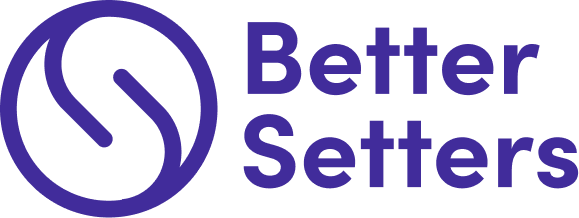Jan 2, 2023 | B2B LEAD GEN
Do you want to generate more leads for your business? Are you thinking about using content marketing to do it? And most importantly, how can you promote newly created content that gets people to take action?
To answer these questions, we need to know what content marketing really is. Content marketing is the use of any type of material, including text, audio, video, and images, to interact with customers and further company objectives.
Blogs, emails, newsletters, social media posts, and case studies are all aspects of content marketing. It’s all about conveying a story, and it’s something that every business produces and distributes around the globe.
Brands must adopt a “publishing” strategy in order to provide content that is beneficial to B2B audiences. This strategy includes learning about the demands and the purchasing cycle of the target market. Useful, pertinent, intriguing, and timely are all adjectives used to define valuable content. In order to effectively use content marketing, a cultural shift from “selling” to “helping” is necessary. This shift necessitates different marketing goals, strategies, and abilities than those associated with more conventional marketing techniques.
Is Content Marketing Necessary and Worth the Effort?
Content marketing is an essential strategy for B2B companies looking to grow and engage their customer base. By creating interesting, engaging content and strategically distributing it on the web, you can drive more traffic to your website, gain leads, and ultimately increase sales. And with the right content marketing strategy, you can use different channels, such as social media, SEO, and email, to reach your target customer.
Content marketing can also help you build trust with your customers and establish your business as a thought leader in your industry. Furthermore, content marketing can help you build relationships with potential customers, as well as strengthen the relationships you have with existing customers. All of this can result in increased brand awareness and loyalty. So if you’re a B2B company looking to take your business to the next level, content marketing is the way to go.

Image credits: Pixabay
What Kind of Content Should Your Company Use?
Ready to get in on the action? First, you must know about the many ways you can use content marketing to generate maximum leads for your business. For certain objectives, different formats are more suitable. As a result, the content mix for your brand should be chosen depending on your goals. Go with what works for you.
Blogs and Articles:
In today’s ever-changing digital landscape, businesses must find ways to stand out and draw in customers. One way to do this is by utilizing articles and blogs as part of your business’s marketing strategy. Writing and publishing articles and blogs can be an effective and low-cost way to gain visibility, create relationships, and build trust with your customers.

Image credits: Pixabay
It’s the easiest type of content there is and can help your brand build its reputation in the industry. By engaging in regular article and blog writing (adding CTAs wherever necessary), you can also drive organic traffic to your website and increase conversions.
With the right approach and content, articles and blogs can be powerful tools in your business’s marketing arsenal.
E-books:

Image credits: Pixabay
E-books are an effective and powerful tool for businesses to generate leads and build relationships with customers. They provide a great way to share knowledge, showcase expertise, and develop trust with potential customers. They can be used to:
- Educate and inform potential clients about a company’s products or services.
- By offering readers quality content that is relevant and beneficial, businesses can improve their visibility and credibility in their respective industries.
- Provide an opportunity to establish brand recognition.
- E-books can be used as a platform to create effective calls-to-action that can help convert leads into customers.
With the right content, an e-book can be an effective lead-generation tool for businesses to connect with their target audience.
Infographics:
The reason infographics are so helpful is that they naturally convey information visually and enable quick and effective communication. They are also very shareable, which will enable you to reach more people on various social media networks. Infographics are very popular in media outlets, and they are an excellent way to reach out to your target audience.
In an age of content overload, it’s essential for businesses to stand out from the sea of competitors and capture the attention of their target audience. Infographics are a powerful tool for doing just that—combining useful information and captivating visuals to tell a story that’s both informative and engaging.
As a marketing tool, infographics provide a unique way to share data-driven insights with your customer base, helping to increase understanding, enhance brand recognition, and drive conversions. From illustrating complex concepts in an easy-to-understand format to combining visuals and text to create a compelling narrative, infographics offer a great way to get your message out and make an impact.
You should not underestimate this handy tool to help tell your story in a compelling and attention-grabbing way at every stage of the buyer’s journey.
Videos (motion graphics, explainer videos, etc.):
While infographics are graphic representations of information, videos are a more valuable resource because they combine our two modes of processing (visual and audio channels). Most people would prefer to watch a video rather than read a long pamphlet or article simply because it is easier to consume.

Image credits: Unsplash
You can tell your whole brand story in a 60-second video and would be able to control the narrative entirely. Isn’t that the best situation? As more platforms become video-friendly (or video-exclusive), having a brand video is becoming more important than ever.
Fortunately, production processes are becoming more accessible to everyone, including non-creators. Video offers countless narrative choices; you can produce a quick TikTok video on your phone, a high-quality live-action video, or a motion graphic in just a few minutes. You can get creative and use a lighthearted way to highlight some new features and give the audience a laugh—a much better way to start a conversation than a boring sales pitch.
Podcasts:
Over the past ten years, the popularity of podcasts has skyrocketed and is only set to increase. As long as the themes brands choose are pertinent to their audience, they can offer a lot of value through this medium. The most popular podcasts are those that instruct, amuse, or inspire (or, astonishingly, do all three).
While you might believe that creating a podcast only requires pressing the record button on your phone, consumers now expect a certain level of production quality, as podcasts are a common form of media. You must therefore be able to successfully record, edit, and share. Above all, you must have the time and funds to maintain your podcasting schedule (that means choosing topics, booking guests, etc.).
But don’t let any of that deter you from creating podcasts. If done correctly, podcasts can help you demonstrate expertise, grow a community, and establish credibility. Just be consistent, do your research, stick to the format, keep it light, and you’ll be able to create a good, engaging podcast.
Social media content:
Social media is a great way to capture attention, engage your audience, and feed them a steady stream of interesting content across social channels. This helps you build a strong relationship with relevant audiences, which will eventually be more receptive to targeted sales pitches and paid media campaigns.
Maintaining a consistent social presence is also essential for establishing credibility. Prospects undertaking self-guided research will want to see an active account with a strong following and consistent engagement.

Image credits: Pixabay
User-generated content is a great way to engage the audience. You can publish teasers and use microcontent to cross-promote your larger cornerstone pieces of content across channels (ebooks, reports, infographics, etc.).
A fantastic method to forge more personal relationships is by introducing consumers to the faces behind your business. Use fun and engaging ways as inspiration to display your culture on social media. But more importantly, posting pertinent news articles, useful industry reports, and other helpful information will help build client trust in your brand. Since social media is all about engagement, they’ll think you’re not attempting to sell them anything. A steady stream of bite-sized content keeps the brand in the minds of prospects.
Webinars:
Even though webinars can be a bit difficult to manage, it is important to know that webinars can help you engage with a more committed audience. By focusing on a particular topic, you draw a crowd that has a certain need that you can meet.
These options provide you the chance to directly engage with your audience through Q&As, follow-up dialogues, etc., in addition to showcasing your knowledge. This aids in developing a connection that endures long after the webinar is over.
Building a campaign around your webinar will enable you to promote your brand through infographics, social media content, etc. This is a great way to target an audience and expand your reach. Asking for feedback will help you find out what worked and what didn’t, as well as what other approaches you can take to meet your goal.
What Steps Can You Take To Ensure That Your Content Has an Impact That Lasts?
It doesn’t matter which options you choose; there are a few strategies to make sure the information makes an impact on your audience and functions as intended.
- Plan ahead:
We all know the importance of planning ahead, and for your content marketing strategy, it’s even more so. It is crucial for you to plan ahead in order to publish consistently, allocate resources, and schedule projects ahead of time.
- Using a smart content approach:
Use a content approach that is divisible. You can use the content you produce in a variety of ways. After all, if you’re investing time and effort in your content, you’d want to get the most out of it.
- Keep your audience’s needs in mind:
It’s really the basics. You’ll need to focus on your audience’s needs and keep them in mind while you’re strategizing. You need to focus on value. What interests your audience is where you want to lead them.
- Your unique brand identity:
It’s what makes you stand out from your competitors. Your appearance, speech, and interactions all reveal who you are. Make sure each piece of content accurately represents your brand in order to create a unified brand story.








